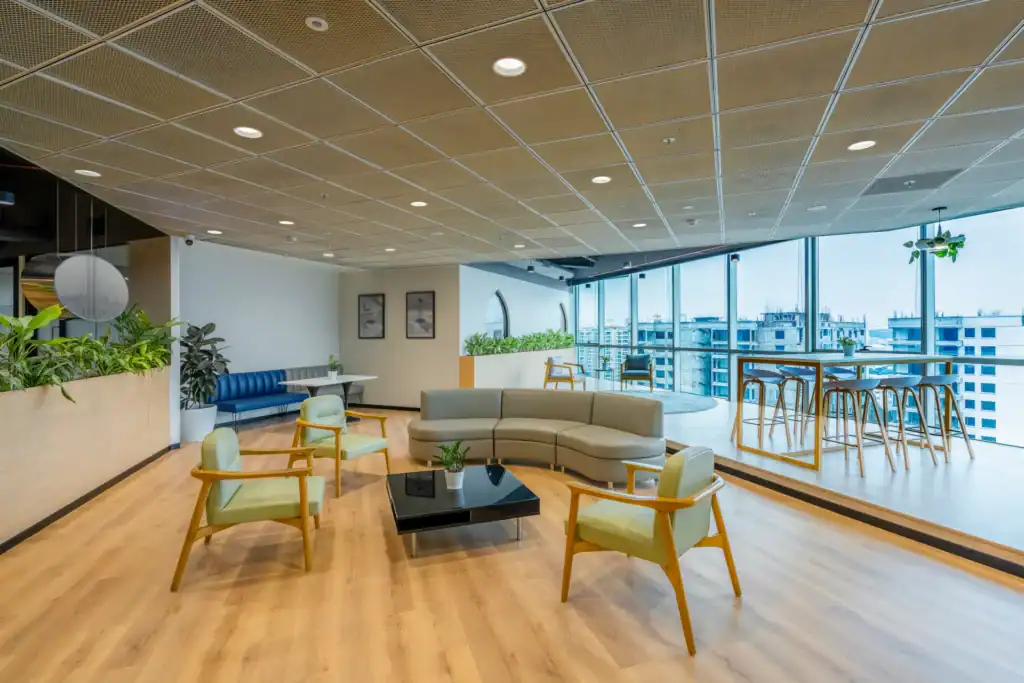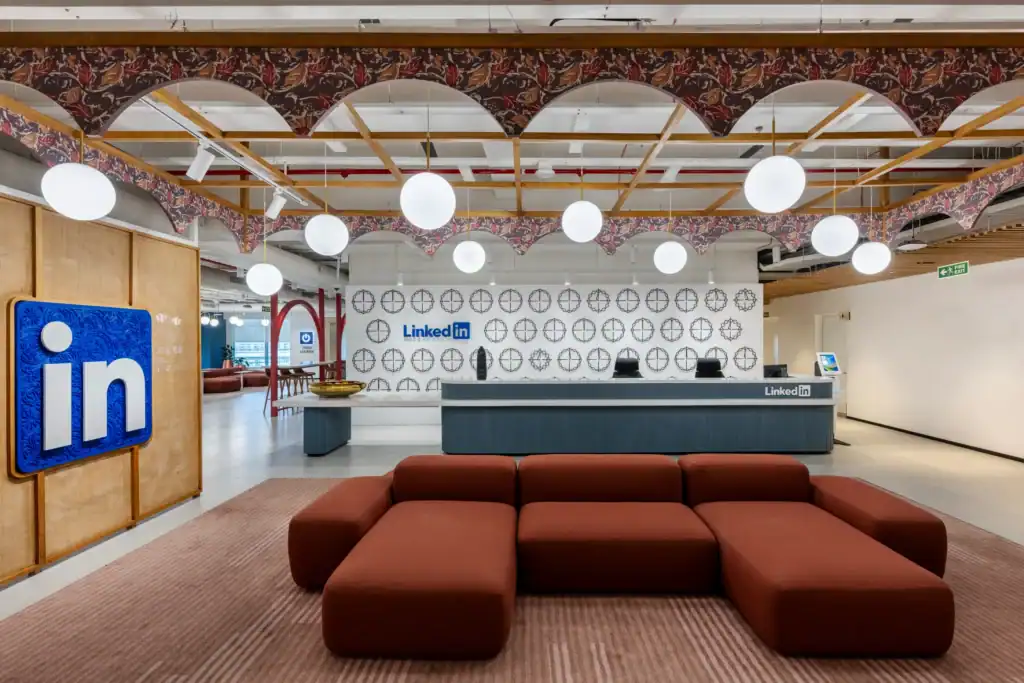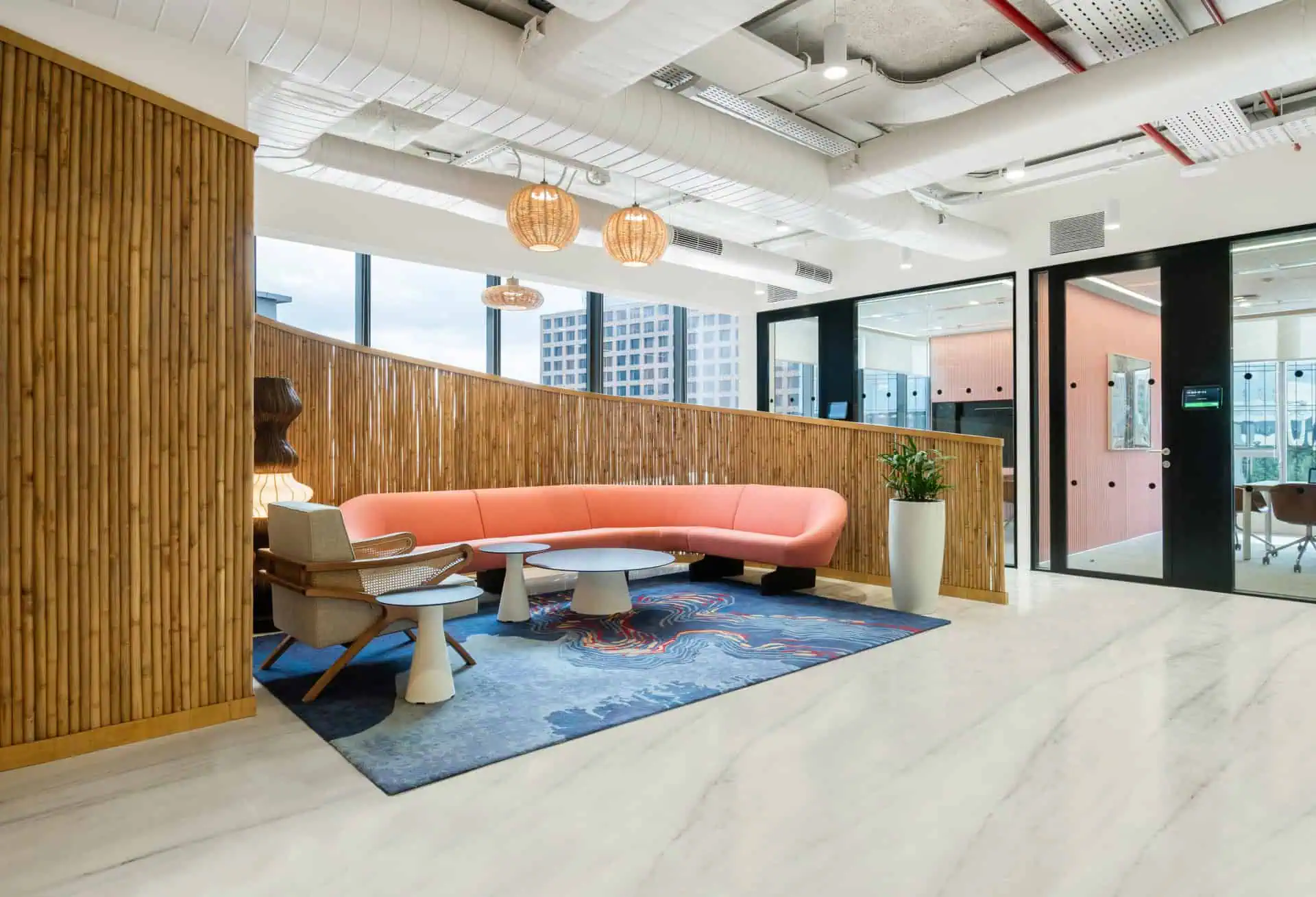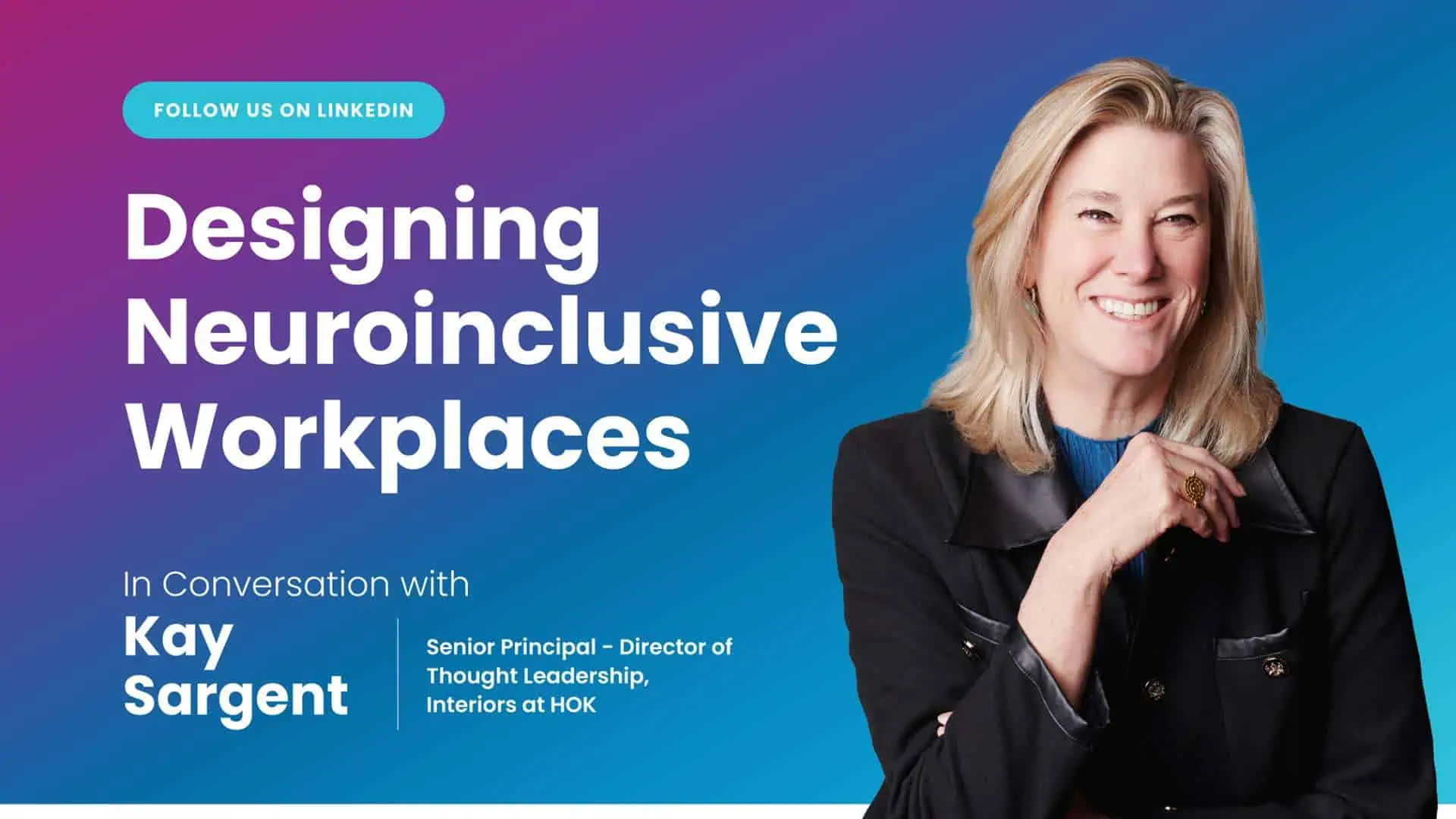An office environment brings about a mindset shift. It allows people to switch gears, focus, and collaborate with intent. A workplace creates a sense of shared purpose that helps organizations grow from strength to strength. However, this change in outlook does not happen as soon as one steps into the office. It begins right when people walk out of their homes to arrive at their workplace. They subconsciously start to align their thoughts and energies towards their daily agenda as they commute, pick up their breakfast, or catch up with a colleague in the lobby.
Therefore, curating a seamless employee experience from the street to the seat has become crucial in the modern-day corporate landscape.
Workplace as a Destination
People are the accelerators of growth. They lead companies towards their goals, one project at a time. So, for them to thrive in a workplace, it’s essential to create environments that promote their health, happiness, and productivity. Organizations around the world have already started designing their workspaces to realign with this rhythm. Referring to a JLL study on “Outlook on Global Design Trends 2025”, the number of companies reporting a community manager or a workplace experience manager has increased by 12% from 2024. This indicates that the need for experience-led office design has become a strategic priority to attract and retain talent, as well as create a supportive work culture.
Benefits of Crafting Meaningful Employee Experiences

Image Courtesy : Global Manufacturing Firm, Hyderabad
As we delve into the future of work, millennials, Gen Zs, and potentially Gen Alphas will join the workforce. These generations are driven by emotional resonance in spaces that make them feel seen, from the first step into the building to the seat they call their own. To cater to their unique needs, it’s essential for organizations to build an ecosystem, rather than solely focusing on the immediate work environment. Let’s have a closer look at the benefits of this approach.
1. Boosts Engagement
When people feel valued, heard, and respected in their workplace, they show up with more energy and purpose. Eventually, this translates into higher engagement and a sense of responsibility within the workforce.
2. Elevates Performance
An emotionally secure workforce is more likely to perform at its peak. When people feel connected to their workplace culture, they can think clearly, collaborate smoothly, and deliver consistently high-quality outcomes.
3. Strengthens Loyalty
Employees are more likely to stay with organizations that invest in their professional growth. It helps build emotional ties that reduce attrition and strengthen team stability over time.
4. Foster Innovation
When individuals feel psychologically safe in their work environment, they are more willing to take risks and share creative ideas fearlessly. This creates a culture of trust, futuristic thinking, and resilience.
5. Builds a Brand
A company that prioritizes meaningful experiences becomes a brand that people want to work for. This reputation helps attract top talent and reinforces internal pride, shaping a legacy of excellence from the inside out.
How to Create an Effective Street-to-Seat Experience?
Designing with empathy is the holy grail in curating a street-to-seat experience for employees. It implies tuning into how people feel and syncing with their emotional journey through the day for creating an environment that fosters their growth. Here’s how organizations can implement this strategy.
1. Design a Welcoming Entrance

Image Courtesy : LinkedIn, Bengaluru
The first few minutes after people walk into the office can shape their entire day. Let’s say a person has had a difficult commute and it’s really hot outside; they would want to enter a space that feels calm and composed. So, the office lobby should not add to that stress. Designing a welcoming entrance entails creating moments of pause and respite where people can take a sigh of relief and immediately cut off from the outworldly clutter. Using a neutral colour scheme with hints of natural light, planning a coffee bar for instant relaxation, and a lounge area with plants can help create a sense of comfort. This helps people feel like they have truly arrived in the office, not just physically but also mentally.
2. Create Transitional Spaces
No one goes from 0 to 100 the moment they step into a space. The emotional transition happens in a bite-sized manner, which in the case of spatial design can happen through transitional spaces. These include lobbies, corridors, and breakout spaces where people can sit back, check emails, or even just sit for a moment before diving into their routine. These areas provide a breathing room for individuals to naturally blend into a high-paced office environment. Designing such spaces with ambient lighting, acoustic insulation, and tactile comfort can allow people to rejuvenate before venturing into focused work.
3. Providing Collaboration Areas

Image Courtesy : WSP, Bengaluru
Face-to-face interaction, encouraging cultural belonging, and socialising are the top reasons why employees feel motivated to come to the office. So, it’s important to give them the space they desire. While formal conference rooms are the usual case in point for collaborative spaces, even informal areas such as meeting pods, huddle spots, and co-working desks are essential in today’s hybrid work culture. By placing collaborative areas along primary circulation paths or near landing zones, designers can create soft intersections where culture builds naturally.
4. Leverage the Sound and Light
People come to the office for a distraction-free work experience. This is where lighting and sound play a crucial role in aiding that focus. Acoustically enabled furniture, phone booths, area rugs, ceiling panels, and partitions can help create noise-free zones. Also, playing the soft sound of natural landscapes in shared spaces can help calm people. It can elevate the lounging feel of the space. Speaking of lighting, incorporating adjustable luminaires that adjust to suit the various needs of people can establish flexibility in the workplace. By syncing with the circadian rhythm, it also helps create a healthier office.
5. Make the Seat Worth the Journey
After walking through a thoughtfully designed office, the place where someone finally sits should not be a letdown. The ergonomics of the desk, chair, and other furniture must be appropriate. It is best to give people options to choose what matches their mood or task, maybe a quiet corner, a spot by the window, or a shared desk near their team. Alongside physical comfort, the furniture should also be rightly cushioned and upholstered to exude an emotional ease. It should appear like a seat where people can settle in, concentrate, and feel like they own it.
In Conclusion
In addition to design interventions, creating a seamless street-to-seat experience also requires the right organizational policies and frameworks. It enables them to continually upgrade the user experience based on real-time observations and feedback. For example, implementing flexible arrival windows can reduce congestion at access points and create a more relaxed start to the day. Guidelines around noise control in shared areas, access to touchdown spaces without prior booking, or even a visible daily occupancy dashboard can help employees navigate the space with ease. For organizations, such initiatives unlock smoother workflows, quicker onboarding, and higher space efficiency.
Related Reads:
How can Zen-Like Workplaces Boost Employee Health, Comfort, and Productivity?




